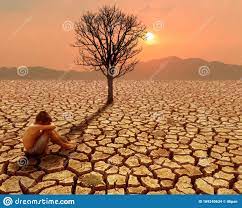
Dealing with extreme heat
(The Hindu)
Dealing with extreme heat
A round 350 million Indians were exposed to strong heat stress between April and May 2022. Between 1990 and 2019, summer temperatures on average rose by 0.50.9°C across districts in Punjab, Haryana, Uttar Pradesh, Bihar and Rajasthan; about 54% of India’s districts have also
seen a similar rise in winter temperatures. Between 2021 and 2050, it is expected that the
maximum temperature will rise by 23.5°C in 100 districts and by 1.5– 2°C in around 455 districts. Similarly, winter temperatures will rise between 1°C and 1.5°C in around
485 districts. Such a sharp rise in urban temperatures is rare. However, with climate change exacerbating local weather patterns, we are likely to see AprilMay temperatures reaching record highs every three years.
Mitigating the problem Greening could help mitigate part of the problem. Ideally, for every urban citizen in India, we should have at least seven trees in the urban landscape. However, many urban localities even in leafy Delhi fall short. Development plans for
Tier 2 and Tier 3 cities can set up a mandate to increase urban surface area that is permeable, while pushing to increase the density and area of urban forests. Expanding wetlands and restoring dead and decaying ponds/lakes may also help ensure ecological functioning along with reducing urban heat.
This will require a push for greater usage of permeable materials in civic infrastructure and residential construction and enhancing natural landscapes in urban areas. Urban layouts such as brick jalis for ventilation and terracotta tiles to allow hot air to escape, and curbs on anthropogenic heat emissions from vehicles, factories, etc. may be considered. Urban building standards should be upgraded to avoid usage of heatabsorbent galvanized iron and metal roof sheets. Additionally, using cleaner cooking fuels will reduce indoor air pollution, which may also help reduce
urban heat.
Streets with low ventilation may need further expansion, or an increase in natural vegetation.
